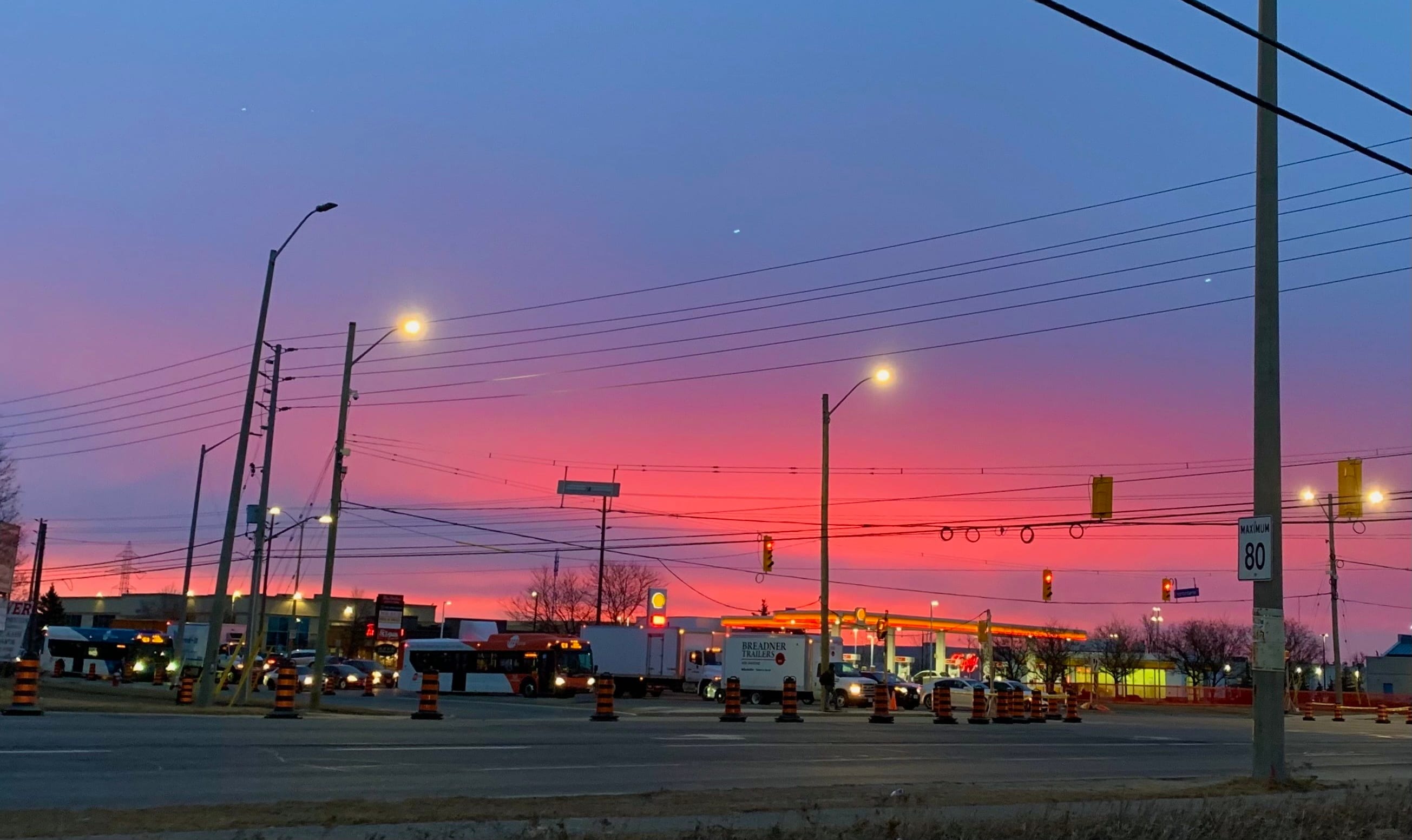What’s below? Borehole testing moves along Hurontario LRT route
In the latest images of progress along the line, see how boreholes are making their mark.
Apr 4, 2021
We’re not going to make any ‘boring’ jokes – because we’ve done too many in the past.
But we did want to go a bit deeper into boreholes, and what’s above or behind them, after seeing the latest images of ongoing work on the Hurontario Light Rail Transit (HuLRT) route that will connect Mississauga and Brampton.
The sun rises over construction efforts, including borehole drilling, along the Hurontario route. (Metrolinx photo)
The pictures show crews working on the deep digs.
Borehole investigations are the first part of site assessment work, and as part of the Hurontario LRT project, Metrolinx is required to evaluate the physical properties of the area where the LRT will be built. Boreholes are being drilled at various points along the Hurontario corridor in order to collect soil and rock samples for further laboratory testing.
A deep hole is made into the ground using a small drill rig which is attached to a conventional truck. Once the sample point has been reached and the required sample is collected, it is sent for testing. By understanding the soil, groundwater and bedrock characteristics along the rail alignment, Hurontario LRT constructor, Mobilinx, is able to optimize and complete the design work for the LRT foundation. The information gathered is used to create detailed engineering plans for construction activities.
The machines used for borehole drilling of the Hurontario LRT project are Caterpillar 420 R IT Backhoe Loaders. These machines can be worked from the front and back sides. The operator’s seat can be tilted 180 degrees to move with the machine.
In this photo the operator has turned around to do jackhammering to break the asphalt. The machines wheels are up and the mechanical legs (tripod like things protruding out) outspread for balance. (Metrolinx photo)
A CAT M320 is being used to excavate for borehole testing after jackhammering. The wheels are up and mechanical legs are stretched to maintain balance while the vehicle performs the excavation work. (Metrolinx photo)
It’s important work that goes far below – allowing the light rail route to make progress above.
by Erika D’Urbano Communications senior advisor
